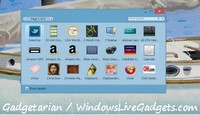The only way to protect yourself against severe PC failures
I’m not speaking about a “nice” or the “best” way: if you want to make sure you won’t find yourself with a PC you are unable to fix, having to contact technicians, losing a lot of time, exposing your data and suffering the cost of a repair, here is the one and only way to follow, and it is not difficult! Of course you can immediately use safe boot to see if you can fix anything yourself (in case you are able to safe boot…), you can perform a system restore to a previous point in time losing some settings and programs, you can even restore a system image… Safe boot comes first, since it is the only option that can help without serious changes in your setup. Using a restore point to reconfigure your system may not even work. Restoration of a system image may prove the only way to go, but still, Windows native imaging is famous for being often unable to restore an image! As if this were not enough, there are cases when you are not able to complete the boot procedure enough to get to native repair options! This really hearts! Especially if there is a critical system file missing or damaged, you are in real trouble! Here is what you need to do when your PC is alive and well, if you like to fix it yourself when a serious problem appears. When things are serious, only the restoration of a system image can help, which in some cases means that you need also to be able to boot from a USB or DVD drive.
1) Make sure you create frequently not only restore points (these are created automatically if you have System Restore enabled for the system drive, which you should) but also a full image, using not only the “Backup & Restore > System Image” tool of Windows itself, but also third party tools, such as Macrium Reflect and Aomei Backupper. Use all of them to create system images, making sure that when you need to restore an image some of these utilities is going to work. Make also sure you use those programs to create a relevant USB / DVD drive able to let you boot and restore your most recent system image.
2) Make sure you have a bootable USB or DVD drive containing the Windows Installation files. You can download Windows Media from Microsoft. This is necessary in case critical Windows files are missing. Enter BIOS Setup to boot from your Windows Media Drive if your system stops booting even before it gives you repair options!
Provided you are familiar with restoring a system image, I don’ t need to write anything else; you are supposed to know how to change boot device and where you need to boot from each time to complete your task. Just notice that a device may appear twice in the boot manager, in which case usually the UEFI variant is the one that works. Summarizing: 1) Do NOT neglect to have recent system images and resque disks created not only by the Windows native imaging tool but also by several free resque tools such as Macrium Reflect and Aomei Backupper, 2) Do NOT neglect to have an official bootable Windows Installation USB or DVD drive available, 3) Understand how you enter BIOS settings to change where your boot from. Enjoy!
